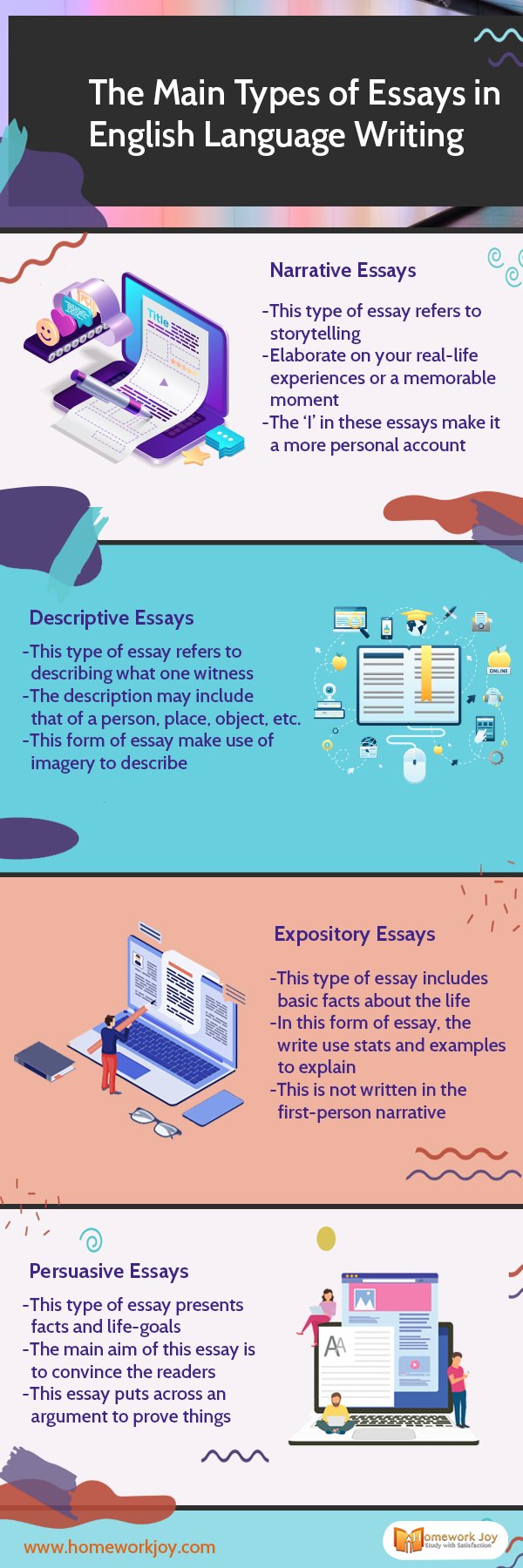One needs to understand the types of essays to understand the uses of essay writing in English. An essay refers to the piece of writing that gives the author’s own argument and ideas. An essay can be termed as formal and informal. The essay can be divided into four types, respectively:
Narrative Essays
This type of essay refers to storytelling. The narrative essay involves students to think and write about themselves. A narrative essay is being written in the first person to engage the readers. Elaborate on your real-life experiences or a memorable moment. Elements of a narrative essay writing include theme, dialogue, and character. The narrative essay describes people and skills to teach a lesson to readers.
The ‘I’ in these essays make it a more personal account
Descriptive Essays
This type of essay refers to describing what one witness. The descriptive essays convey a more profound meaning through the description. The writer’s purpose is to show not tell through colorful words and details. The story may include that of a person, place, object, etc. The qualities of descriptive essays are the use of images, use of five senses and are clear and concise.
This form of an essay makes use of imagery to describe the events.
Expository Essays
This type of essay includes basic facts about life. In this form of composition, the write use statistics and examples to explain the topic. The function of the expository essay is to expose things and ideas through solutions. Awareness is the objective of this essay.
It is not written in the first-person narrative. In an expository essay, writing essays are based on facts and not personal feelings.
Persuasive Essays
This type of essay presents facts and life-goals. The main aim of this essay is to convince the readers to accept the writer’s point of view. This essay puts across an argument to prove things.
The writer should showcase all sides of the argument so that the reader can decide what’s right and wrong.
